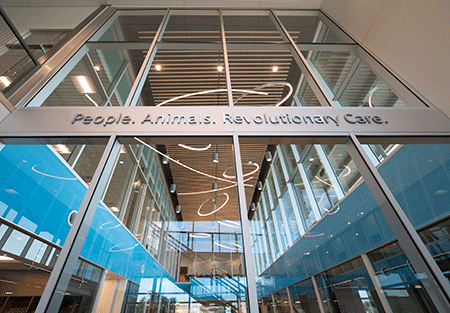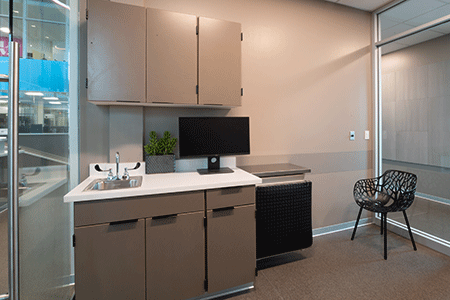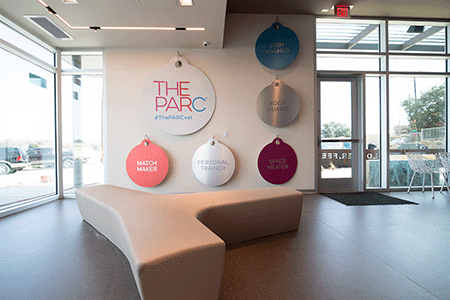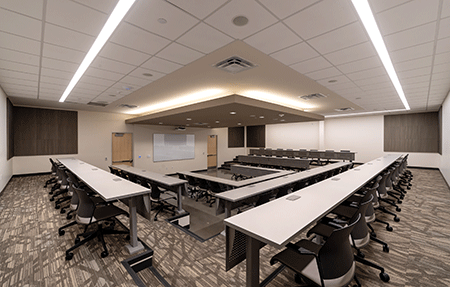Where 'The Back' is in your face
At this innovative veterinary hospital, pet owners see into treatment from reception, exam roomswell, everywhere. The PARC has taken transparency to the next level.

A view into The PARC veterinary facility in Fort Worth, Texas. (All photos courtesy of The PARC; photographer Leo Wesson)When judges for the 2019 dvm360 Hospital Design Competition said transparency is an up-and-coming trend, they might have had a hospital that hasn't been entered yet in mind.
The PARC in Fort Worth, Texas, is a gigantic, glass-filled ode to medical transparency. And practice owner Steve Hotchkiss, DVM, says the idea starts with a change in perspective from the veterinarian's wants to the pet owner's wants.

Glass opens up the front and back of this veterinary exam room at The PARC. Practice owner Dr. Steve Hotchkiss says, "Millennials ask, 'Why?' when I say I want to take [their pet] to the back. Millennials purchase experiences, not things.""It develops from the start from 'What do I want to deliver?' to 'What does the consumer want?' Dr. Hotchkiss says. "I just want to think about me and how the staff concerns me, that's my natural default. It's all our natural defaults. And clients do it too. They think we're in the back watching Netflix, so we need to go and update them every 10 minutes in every exam room and tell them why we're not in the room."
If clients can see the activity, see the high-quality work being performed, see where pets are being treated with care, skill and high-tech medicine, you can justify the value of your work and build client trust.


Reception area seating and branding for The PARC on the first and second floors. The view from the second-floor seating has a direct view into treatment at the bottom right.
The PARC is also a "total pet care resort," says Dr. Hotchkiss. The Hulen Hills Animal Hospital-which boomer clients were loyal to-merged into one building with The Grand Pet Resort & Spa-which millennials would love and then tell staff they wanted their pet to go to the vet next door.
"The resort is the on ramp, and the vet hospital is the highway," Dr. Hotchkiss says. And that resort is-wait for it-also open 24 hours a day, like the emergency part of The PARC.
"Clients need 24-hour access to the pet resort," he says. Think about it: Hard-working pet owners spend $5,000 on a vacation to Maui, they're gone for 10 days, they get back at 8 p.m. on a long flight and they have to be at work first thing in the morning. "And the dang pet resort is closed," says Dr. Hotchkiss. So: 24 hours.
"Veterinarians are going to have to focus on consumers," Dr. Hotchkiss says. "I don't want to do it all the time either. [The resort] is totally hard to staff. But the wheel has to keep turning, to funnel things to the core practice that drives our economic engine. If I don't offer boarding, the experience is ba-bump, ba-bump, ba-bump, it's not a smooth experience."

But let's not forget the staff, says Dr. Steve Hotchkiss: "Your staff is your golden goose." This 50-seat training room fixes a "pitfall" Dr. Hotchkiss saw in the last decade: "We had so much trouble finding a place to train where we wouldn't be interrupted."